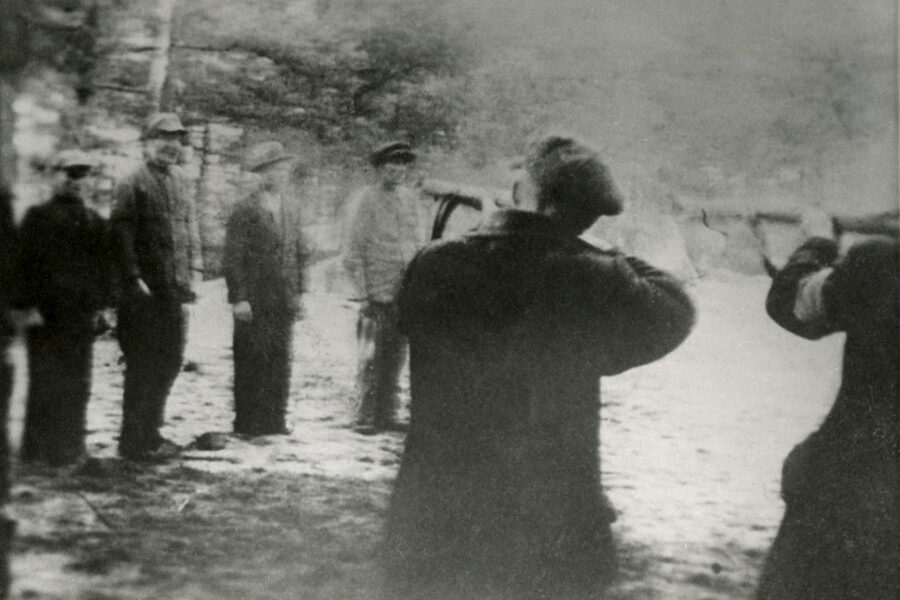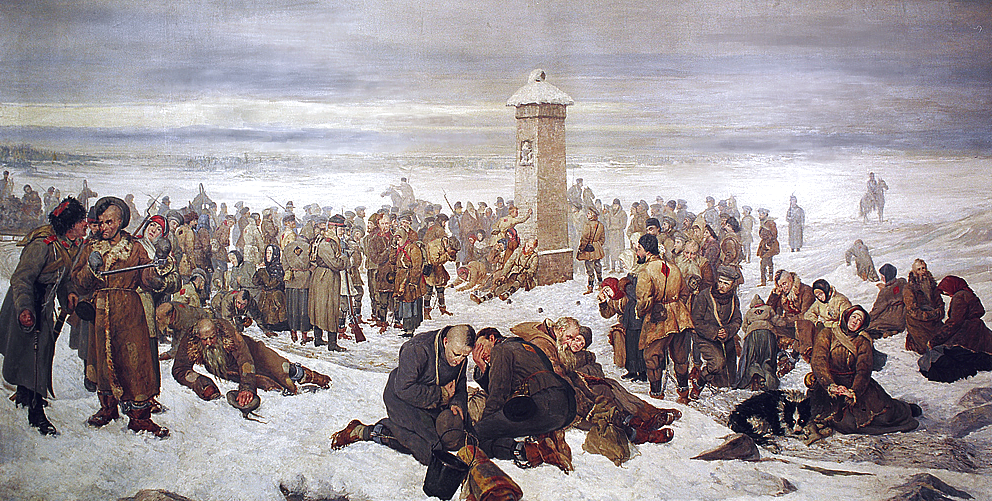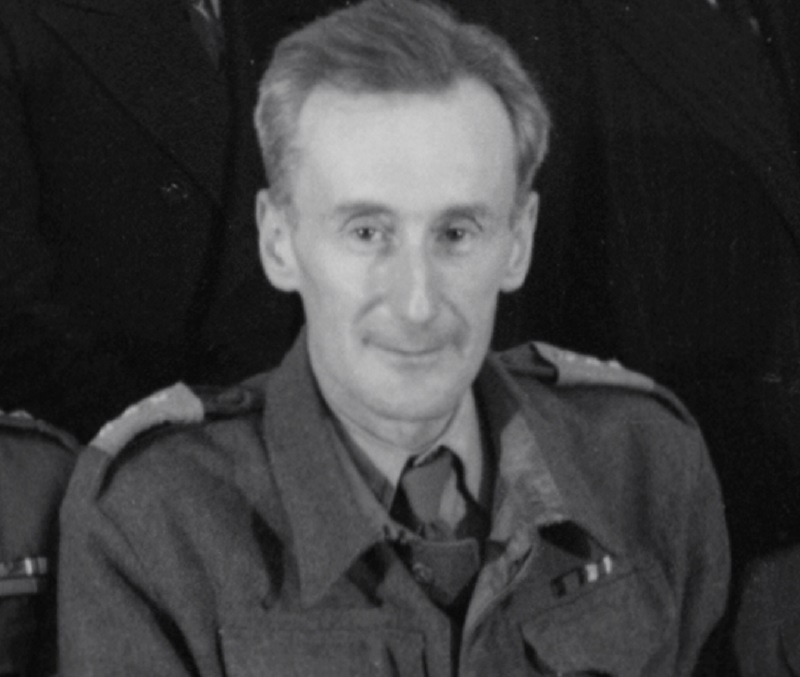The diabolical plan of the Third Reich

PIOTR WŁOCZYK: Hitler was initially unsure what to do with conquered Poland. When did that change?
PROF. BOGDAN MUSIAŁ*: Stalin’s position turned out to be decisive. The Soviet dictator dreamed of a war in the West. If there remained some sort of rump Poland in the shape of the Protectorate of Bohemia and Moravia, it would give France and Great Britain an excuse to make peace. In that case, the war would have ended quickly. Hitler, meanwhile, did not really want a war with London; he regarded the British as potential allies.
Britain was to be a maritime empire, the Third Reich a continental one.
Exactly. Stalin knew this, which is why in late September 1939 he forced the Germans to confirm that no rump state would be created in the occupied territories. Poland was to be completely wiped out.
Why did Hitler agree to this, taking the leverage in negotiations with the Allies out of his own hands?
Because he could not wage war without Stalin. European leaders remembered the experience of World War I. Twenty years is not an eternity. The previous war had shaped thinking about strategy. France and Britain again assumed a naval blockade on Germany. Without supplies of raw materials, Germany was unable to think about victory. Meanwhile, the political and economic alliance with Stalin gave Hitler hopes of breaking this pattern. In discussions about the Molotov-Ribbentrop Pact, Poles – for obvious reasons – focus on the political aspect. But for Hitler, the absolutely most crucial issue was the economic alliance (the German-Soviet trade agreement of August 18th, 1939). Stalin pledged to supply all the raw materials Hitler needed, starting with oil, grain, and metal ores. If Hitler had not yielded to Stalin’s demands for Poland, he would have taken a huge risk. It would have been an all-in game for him, because in such a situation negotiations with the Allies would have had to end in peace. And Hitler could not afford such a risk. Therefore, at this stage of the war he clung to the German-Soviet alliance.
But why did Hitler assume that trying to reach an agreement with the Allies and preserve a rump Poland would mean breaking the alliance with Stalin?
Because in such a situation, the economic alliance would not have been right from Stalin’s perspective. The Soviet Union was providing priceless raw materials to the Germans only for them to fight the Western countries. Stalin wanted the West to unleash another war on its own. This dream, which he shared years ago with Lenin, Trotsky and the rest of the leading Bolsheviks, was his overriding goal. To sow the seeds of chaos, after all, Stalin helped Hitler rise to power. He then gave instructions to the Communist Party of Germany that its militias should not fight the Nazis, but instead take on Weimar Germany. And this they succeeded in doing together. Later, admittedly, the German Communists were smashed, but the most important thing for Stalin was that they, along with their ideological twins the Nazis, succeeded in achieving their previously most important goal – the destabilization of the Weimar Republic. As you can see, Hitler and Stalin, two extremely leftist comrades, thought in similar terms. After September 3rd, 1939, following the declaration of war by London and Paris, Hitler was already doomed to his Kremlin comrade.
So after September 3rd, Stalin’s position grows immeasurably.
Of course. Anyway, in general, Stalin’s role is extremely important in the outbreak of World War II. Germany is primarily responsible for unleashing this conflict, but today the world forgets that the Bolsheviks lived up to German demands.
After the dismemberment of Poland, Ribbentrop sent birthday wishes to Stalin in December 1939. The Soviet dictator sent a letter in response, emphasizing the “blood-cemented friendship between the two countries”. The only question is what blood he might have meant…
This is an exceptionally treacherous statement, because the two countries fought together against one isolated country. But Stalin captured the essence here – the attack on Poland and the river of bloodshed that spilled from Polish soil actually cemented the alliance between the two totalitarian forces.
Let’s go back to the period before 1939. What was Nazi propaganda against the Poles like then?
After 1933, especially after the signing of the non-aggression declaration between Berlin and Warsaw in January 1934, German elites were shocked. Germans could not fathom how it was possible that they should tone down their anti-Polish sentiments from now on. For let’s remember that anti-Polish policies had largely shaped Germany’s internal and external politics since the Poles regained their independence. The destruction of the Polish state, or at least the recapture of the territories in the east lost as a result of World War I, was always at the top of Berlin’s list of priorities. Therefore, it is understandable that Weimar Germany looked sympathetically toward Soviet Russia. What Hitler did in 1939 is not a paradox, but a return to Rapallo and the Berlin Treaty of April 1926. The latter, in particular, is hardly talked about in Poland. It was an extension of the Rapallo arrangements. It was an economic alliance, but it was also accompanied by a military treaty. Its natural consequence was the planned partition of Poland, although this was not put as explicitly as in the Ribbentrop-Molotov agreement.
In mid-August 1939, when the economic issues had already been agreed upon and the relevant agreement signed (August 19th), a proposal to renew either the Rapallo Agreement or the Berlin Treaty came from the German side. When I wrote a book on the backstory of the Ribbentrop-Molotov agreement, it opened my eyes. For the Nazis, it was only natural to renew the agreements with the Bolsheviks from the period of the Weimar Republic. It was a return to the policies of Walther Rathenau, who was a notable Polish-American. Incidentally, Donald Tusk received an award named after him a few years ago. Did he not realize who Rathenau was? But this was no exception. It should be made clear that the Weimar Republic was a Polish-herding state.
So Hitler, when he signed the non-aggression pact in 1934, had to muzzle the Germans?
This came as a shock to them. Not only was the anti-Polish propaganda ended, but there was even a special mixed textbook commission. Historians from Poland and Germany were to develop such a model for teaching about history that young people would not be fed mutual prejudice. At that time, cultural contacts were significantly revived, one could even say that an idyllic period in mutual relations at official levels prevailed.
But did these endeavors have any effect on the image of Poland and Poles in the eyes of “ordinary” Germans?
I’m afraid not. Such a policy would have had to be pursued by Berlin for several decades to permanently banish hatred of Poles from the minds of Germans. For good measure, German society had already been fed the most negative emotions toward Poles since the 19th century. The Germans did not have to lose any territories to us to feel pure hatred for us. No propaganda, not even the most effective Goebbelsian school of manipulating the masses, could change this in just a few years.
Returning in the spring of 1939 to the old, tried-and-true anti-Polish propaganda must then have been a trivial task.
It was euphoric! In the spring of 1939, there was simply a return to the propaganda of the Weimar Republic period. Goebbels did not discover “America” here. Germans were delighted that it was finally possible to speak the “truth” about the Poles. The difference between Nazi and Weimar anti-Polish propaganda was that an element of racism was attached. This component appeared very late, it was only in the summer of 1939 that the “scientific” justification for classifying Poles as subhuman was presented. German specialists in racial matters had not dealt with this subject before, because they did not have permission to do so. Poles were being considered as potential allies, so as long as this option was on the table, they could not be “subhuman”.
What feelings did Hitler have toward Józef Piłsudski? On the Internet, one can easily find a photo of the funeral mass for the Polish Marshall, which Hitler attended.
He felt great respect towards him. Hitler hoped that Poland would be a “junior partner” in the war against the Soviet Union.
Where do you situate yourself in the argument among historians about the chances of such an alliance succeeding?
I belong to that group of historians who rely on facts. Hitler wanted an alliance with Poland targeting the Soviets, but the Poles did not go for it. This is a fact. Piłsudski laid out a very clear path for Polish foreign policy – we were to keep an equal distance between Berlin and Moscow. No alliance was to be made either with one or the other. Piłsudski’s successors stuck to this philosophy, so in my opinion it is a waste of time to speculate. The fact is that Hitler was furious with the Poles for rejecting his proposal. This completely nullified his war plans. Because of Warsaw’s refusal, he had to reinvent the concept of rebuilding Europe under Germany’s diktat.
That is to say, the German soldiers attacking Poland did not have to somehow specifically encourage hatred. It was enough that Goebbels took off their political muzzle.
That’s exactly right. Years ago, I conducted many interviews with Wehrmacht soldiers who took part in the war against Poland. One of them, then a young tank soldier, told me that such hatred of Poles was instilled in him at school that taking part in the attack on our country seemed to him to be by all means the right thing to do. Importantly, this soldier attended school during the Polish-German “thaw”. This shows that while there was a lot of courtesy in official intergovernmental contacts, nothing changed at the lower levels.
For decades, the Germans had built up not only an atmosphere of hatred but also contempt toward the Poles. And that’s why it was so hard for them to come to terms with the loss of their eastern lands. The Germans believed that the Poles sneakily took advantage of a moment of German weakness and only with the help of France stole part of the country from them.
As we explained at the beginning, Hitler did not initially know what to do with the Polish state. And what were the plans regarding Polish society?
By August 1939 at the latest, the Germans already had a preliminary plan for the destruction of the Polish elite. It is well known that an extermination plot can only be carried out freely in wartime, when the attention of the international public opinion is directed at reports from the front. In times of peace, mass murder is much more difficult. The Germans knew this, and therefore immediately, in order not to waste time, proceeded to exterminate the Polish elite. Why did the Germans hold off until May 1940 from carrying out the genocidal AB operation? Because the attack on France concentrated the attention of the whole world on this event and reports of the extermination of thousands of representatives of the Polish elite were lost in the flood of information from Western Europe.
The German Nazis carried out the same plan in Poland that the Bolsheviks had previously implemented at home. The destruction of the “head” of a nation allows you to do almost anything to the rest of society. On the plans of the Germans for the Polish population of the General Government, we do not need to speculate. Everything is clearly recorded in Hans Frank’s diary, including his conversations with Hitler precisely on this subject.

What did this plan look like?
The overriding goal was to destroy the Poles as a nation. The Poles were to be a population without cultural cohesiveness. It should be emphasized that while the Germans knew from the outset that they would murder the Polish elite, initially they did not yet have specific plans for the Jews. Various options were on the table in this matter. There was talk of confining the Jews to a “reservation” or deporting them to Madagascar. The murder of the Jews became the prevailing strategy with the German attack on the USSR.
Poles were supposed to know how to sign, count to a hundred and that was the end of it. This was the bare minimum necessary for German peasants and industrialists to make free use of the Polish labor force.
In discussions about World War II, it is sometimes heard that Poles were supposed to be “next after the Jews”. How much truth is there in this?
Such opinions are not supported by the facts. The Germans did not foresee the total murder of the Poles as they planned the total extermination of the Jews. The Third Reich desperately needed manpower. And that was exactly the place that was to be assigned to the denationalized Poles.
During the implementation of the General Plan East, 120,000 Poles, or 31 percent of the population, were expelled from Zamojszczyzna…
It was an experiment. However, the Germans saw at that time that the resistance of the Poles was generating too many losses. Above all, the German civil administration was very critical of the way the operation was carried out because of the cost involved. But at that time, 1942/43, it was already clear that Germany was losing the war. If the situation at the front had been different, the Germans would undoubtedly have allocated hundreds of thousands of troops to implement the objectives of the General Plan East.
According to them, 80-85% of Poles were to be expelled from the Polish territories to the east. But the Germans were already planning to expel “only” 50% of Czechs, for example.
The Germans believed that the Czechs could be Germanized quite easily. The difference is that with regard to the Czechs these plans remained only on paper, while in Poland the Germans began to implement them. It is impossible to compare the two occupations at all. Czech workers were really not too badly off during the war. The Germans took care of them because they were invaluable from the point of view of the Nazi arms industry.
At the very end of the war, in view of the approaching Soviet army wave, do you see any change in German policy toward Poles?
1944 saw the emergence of completely bizarre plans. Hitler rejected the possibility of creating Polish units for a very long time. Although three Polish police battalions were created in 1943 to be directed to fight Ukrainian nationalists, they were sent to fight Soviet partisans in Belarus. This was an exception that confirmed the general rule: no deals with Poles.
In 1944, however, the Germans were in desperate need for “cannon meat”. So, in the fall of 1944, Germans announced recruitment for “Polish Wehrmacht” units. It was a grotesque act that testified to the extent of delusion of Hitler and his entourage. Racial policy had not changed in any way, Hitler had just ordered the destruction of Warsaw, and the leading Nazis imagined that Poles would fight alongside them against the Red Army. Recruitment for this “Polish Wehrmacht”, of course, ended in complete failure.
*Prof. Bogdan Musiał is a historian specializing in 20th-century German history, and author of many works on German crimes in occupied Poland [including “Who will help the Jew” (“Kto dopomoże Żydowi…”)].




